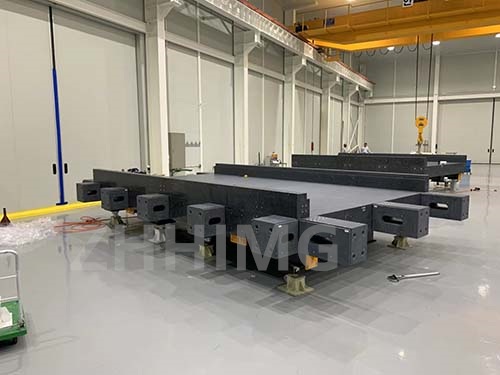Granite is an important material used in the manufacturing process of LCD panels. It is known for its durability, strength and stability. However, due to extreme operating conditions and rough handling, granite components can eventually become damaged, affecting their appearance and accuracy in the process. This can lead to a decline in the overall quality of the finished products. In this article, we will explore how to repair the appearance of damaged granite components and recalibrate their accuracy to ensure optimal performance.
Repairing Damaged Granite Components
There are different types of damage that can occur to granite components, such as scratches, chips, cracks, and discoloration. Here are some ways to address these issues:
1. Scratches - For minor scratches, you can use a granite polishing compound and a polishing pad to buff them out. For deeper scratches, you may need to use a diamond abrasive pad to grind them out first, and then use the polishing compound. Be careful not to over-polish as this can affect the flatness of the surface.
2. Chips - Small chips can be repaired using a granite epoxy resin, which can fill in the damaged area and harden to match the color and texture of the surrounding surface. For larger chips, you may need to use a patching kit that includes a matching granite piece.
3. Cracks - If you have a crack in your granite component, you will need to use a two-part epoxy to fill in the crack and prevent it from spreading. The epoxy should be mixed thoroughly and applied to the crack, then left to dry and harden. Sand the surface smooth once the epoxy has hardened.
4. Discoloration - Over time, granite can become discolored due to exposure to chemicals or UV light. You can use a granite cleaner and polish to restore the surface. If the discoloration is severe, you may need to use a granite color enhancer to bring back the natural color.
Recalibrating Accuracy
Damaged granite components can also affect the accuracy of the LCD panel manufacturing process. Here are some ways to recalibrate the accuracy:
1. Check for Flatness - Use a granite surface plate and a dial indicator to check the flatness of the granite component. If it is not flat, you will need to grind it down using a diamond abrasive pad until it is level.
2. Adjust Leveling Feet - If the granite component is not level, adjust the leveling feet until it is. This will ensure that the component is stable and not moving during operation.
3. Use Calibration Tools - Use calibration tools such as laser alignment tools and angle gauges to ensure that the granite component is at the correct angle and position.
4. Check for Wear - Regularly check for wear on the granite component, especially in areas of high impact, and replace the component if necessary.
Conclusion
In order to maintain the quality of the LCD panels being manufactured, it is important to repair any damaged granite components and recalibrate their accuracy. By following the steps outlined in this article, you can ensure that your equipment is in optimal condition and producing high-quality products. Remember to always use caution when repairing granite components and seek professional help if necessary.
Post time: Nov-29-2023

